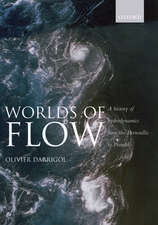Adsorption and Catalysis on Transition Metals and Their Oxides: Springer Series in Surface Sciences, cartea 9
Autor Vsevolod F. Kiselev, Oleg V. Kryloven Limba Engleză Paperback – 27 dec 2011
Din seria Springer Series in Surface Sciences
- 18%
 Preț: 1131.25 lei
Preț: 1131.25 lei - 15%
 Preț: 654.77 lei
Preț: 654.77 lei - 18%
 Preț: 1113.09 lei
Preț: 1113.09 lei -
 Preț: 390.63 lei
Preț: 390.63 lei -
 Preț: 407.98 lei
Preț: 407.98 lei - 15%
 Preț: 657.57 lei
Preț: 657.57 lei - 15%
 Preț: 636.63 lei
Preț: 636.63 lei - 15%
 Preț: 641.20 lei
Preț: 641.20 lei - 15%
 Preț: 651.19 lei
Preț: 651.19 lei - 15%
 Preț: 645.60 lei
Preț: 645.60 lei - 15%
 Preț: 632.70 lei
Preț: 632.70 lei - 15%
 Preț: 640.24 lei
Preț: 640.24 lei - 15%
 Preț: 646.11 lei
Preț: 646.11 lei -
 Preț: 397.38 lei
Preț: 397.38 lei -
 Preț: 386.22 lei
Preț: 386.22 lei -
 Preț: 387.75 lei
Preț: 387.75 lei -
 Preț: 389.31 lei
Preț: 389.31 lei -
 Preț: 399.12 lei
Preț: 399.12 lei -
 Preț: 406.42 lei
Preț: 406.42 lei - 18%
 Preț: 1011.14 lei
Preț: 1011.14 lei - 18%
 Preț: 2100.88 lei
Preț: 2100.88 lei -
 Preț: 398.35 lei
Preț: 398.35 lei -
 Preț: 392.21 lei
Preț: 392.21 lei -
 Preț: 389.88 lei
Preț: 389.88 lei - 15%
 Preț: 646.43 lei
Preț: 646.43 lei - 15%
 Preț: 643.16 lei
Preț: 643.16 lei - 15%
 Preț: 643.65 lei
Preț: 643.65 lei - 18%
 Preț: 948.79 lei
Preț: 948.79 lei - 15%
 Preț: 641.03 lei
Preț: 641.03 lei - 15%
 Preț: 640.55 lei
Preț: 640.55 lei - 15%
 Preț: 640.71 lei
Preț: 640.71 lei - 18%
 Preț: 952.72 lei
Preț: 952.72 lei - 18%
 Preț: 955.08 lei
Preț: 955.08 lei - 15%
 Preț: 648.42 lei
Preț: 648.42 lei - 15%
 Preț: 641.03 lei
Preț: 641.03 lei - 18%
 Preț: 1000.42 lei
Preț: 1000.42 lei - 18%
 Preț: 952.57 lei
Preț: 952.57 lei - 18%
 Preț: 1001.02 lei
Preț: 1001.02 lei
Preț: 397.59 lei
Nou
Puncte Express: 596
Preț estimativ în valută:
76.08€ • 81.35$ • 63.43£
76.08€ • 81.35$ • 63.43£
Carte tipărită la comandă
Livrare economică 17 aprilie-01 mai
Preluare comenzi: 021 569.72.76
Specificații
ISBN-13: 9783642738890
ISBN-10: 3642738893
Pagini: 460
Ilustrații: IX, 445 p.
Dimensiuni: 155 x 235 x 24 mm
Greutate: 0.64 kg
Ediția:Softcover reprint of the original 1st ed. 1989
Editura: Springer Berlin, Heidelberg
Colecția Springer
Seria Springer Series in Surface Sciences
Locul publicării:Berlin, Heidelberg, Germany
ISBN-10: 3642738893
Pagini: 460
Ilustrații: IX, 445 p.
Dimensiuni: 155 x 235 x 24 mm
Greutate: 0.64 kg
Ediția:Softcover reprint of the original 1st ed. 1989
Editura: Springer Berlin, Heidelberg
Colecția Springer
Seria Springer Series in Surface Sciences
Locul publicării:Berlin, Heidelberg, Germany
Public țintă
ResearchCuprins
1. Introduction.- 2. The Electronic Structure of Transition-Metal Atoms.- 2.1 The Principles of the Crystal-Field and Ligand-Field Theories.- 2.2 Experimental Techniques for Investigating the Surface Compounds and Transition-Metal Atoms in Solids.- 3. The Surfaces of Transition-Metal Oxides.- 3.1 Surface Atoms of Transition Metals in Dilute Oxide Systems.- 3.2 Transition-Metal Atoms in Zeolites.- 3.3 The Surface of Simple Transition-Metal Oxide.- 3.4 The Surfaces of Some Complex Oxide Systems.- 3.5 Energy Levels of Transition-Element Ions in the Bulk and on the Surface of Their Oxides.- 4. Adsorption and Catalysis on Oxides of Transition Metals.- 4.1 Application of the Crystal-Field and Ligand-Field Theories to Adsorptive and Catalytic Phenomena.- 4.2 Symmetry and Reactivity of Coordinated and Adsorbed Molecules.- 4.3 Energy Levels of Adsorbed Molecules in the Band Structure of Oxides and Complexes of Transition Elements.- 4.4 Adsorption of Oxygen on Oxides.- 4.5 Adsorption of Olefins on Oxides.- 4.6 Adsorption of Carbon Monoxide by Oxides.- 4.7 Adsorption and Catalysis on the Diluted and the Supported Oxide Systems.- 4.8 Catalysis by Zeolites Containing Ions of Transition Elements.- 4.9 Adsorption and Catalysis on Magnetic and Ferroelectric Oxides.- 5. The Surface of the Transition Metals.- 5.1 The Band Structure of the Transition Metals.- 5.2 The Surface Orbitals of the Transition Metals.- 5.3 The Real Surface of Pure Metals.- 5.4 The Surface of Alloys.- 5.5 Supported Metals.- 5.6 Small Metallic Clusters.- 6. Adsorption and Catalysis on the Transition Metals.- 6.1 The Adsorptive Complexes on the Surface of Transition Metals.- 6.2 The Energy Levels of Adsorbed Particles on Metallic Surfaces.- 6.3 Adsorption of Hydrogen on Pure Metals.- 6.4 Adsorption of Oxygen on PureMetals.- 6.5 Adsorption of Carbon Monoxide on Metals.- 6.6 Adsorption and Catalysis on Alloys.- 6.7 Adsorption and Catalysis on Supported Metals.- 7. Conclusion.- References.














